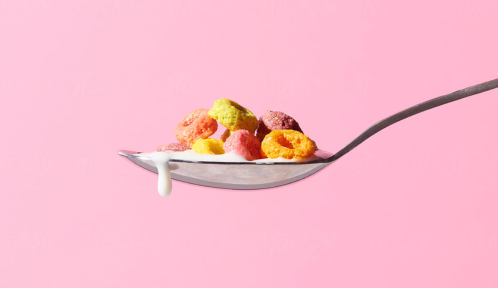Beer before liquor, never been sicker; liquor before beer, you’re in the clear.
Experts in This Article
Brooklyn–based registered dietitian
Bet you’ve heard this sing-songy adage before. If not, there’s a decent chance you’ve been told—or even fully believe—that mixing different types of alcohol in any sequence is a surefire way to feel less than stellar (read: like complete garbage) the next day. But is there *really* any truth to this?
To find out, with certainty, if mixing different types of alcohol is that much worse than sticking to the same kind (and equivalent serving size), we asked Brooklyn–based dietitian Maddie Pasquariello, MS, RD, to break things down for us.
How did the negative connotation of mixing different types of alcohol begin?
According to Pasquariello, many claims about drinking booze can be linked to cultural and societal norms… and not all of them are based in nutritional science.
“Many assumed facts about alcohol consumption are passed down primarily through our social groups and media messaging, as we grow up and work out our relationships with alcohol,” Pasquariello says. “They are usually based around anecdotal, communal constructs that serve a social purpose.” But if they’re not entirely truthful, why do they have longevity?
“Despite not being backed by scientific research, the reason these claims might stick around is in part due to our quest to prevent or lessen the effects of a hangover the next day,” Pasquariello continues. Makes sense; after all, most of us don’t want to test the limits if nausea, throbbing headaches, dehydration, and the like may be more likely to wreak havoc after imbibing. (That is, when we have more solid and sound judgment before alcohol’s effects start to kick in and we throw caution to the wind.)
In addition, the social aspect of drinking can also allow certain habits and rituals to proliferate. “For instance, the concepts of ‘starting the night with a shot’ and ‘ending the night with a beer’ have grown increasingly common,” Pasquariello says.
Is mixing different types of alcohol as bad as we’re led to believe?
In one word: no. “What will most affect your hangover is the total amount of alcohol consumed,” Pasquariello says. With that said, there are a few nuances the dietitian takes care to point out.
Total volume of alcohol consumed
Again, the volume of alcohol you drink will be the biggest determining factor dictating how decent (or disastrous) you’ll feel. On this point, Pasquariello shares a few FYIs about alcohol serving sizes, which vary according to your drink(s) of choice. First, she reminds us that standard serving sizes of the most common alcoholic drinks are as follows:
- Beer: 12 ounces
- Wine: 5 ounces
- Distilled spirits: 1.5 ounces
“When we talk about total volume or total quantity of alcohol, it’s important to keep in mind where the concept of a ‘standard drink’ came from, since that’s usually how we measure consumption or report our drinking habits to a health professional,” says Pasquariello. She explains that these measures were actually determined by the beverage industry for standardization and regulatory purposes. “Eventually, this method of measuring alcohol consumption was co-opted by health organizations to better quantify alcohol consumption and understand health trends from a medical perspective.”
This bit of context aside, Pasquariello reiterates that “the total quantity of alcohol you drink is the main factor that will influence how strongly you feel the effects of alcohol, [including] how hungover you are, but also how alcohol affects you during the night of drinking, how it affects your sleep, and so on.” But there’s more that factors into the equation.
Timing of intake
Let’s now circle back to the concept of serving sizes. “If we compare one standard-size drink of a few different types of alcohol, the total volume of alcohol they contain is about the same due to the overall percentage of alcohol found in the liquid,” Pasquariello says. “But what differs is the time it takes you to consume them.” This is another key factor that can influence how potent the effects of alcohol can be—both as you imbibe and on the next day.
“As soon as the alcohol hits your system, it begins to be absorbed into the bloodstream,” Pasquariello continues. “As such, you’ll feel intoxicated more quickly if you consume a shot in a couple of seconds compared to drinking a beer over the course of 30 minutes.” Essentially, downing several shots within a few minutes can also yield more intense effects than drinking one shot before mixing things up with a beer or two over the course of a few hours.
Carbonation
Next, Pasquariello mentions that carbonated alcoholic drinks may also result in quicker side effects. “More carbonation tends to mean faster absorption from the GI system into the bloodstream,” she says. In other words, you could start to feel the effects of beer, hard seltzer, and sparkling wine more rapidly compared to other alcoholic bevs. Moreover, other sources claim that carbonated drinks have the potential to irritate the stomach lining, which can also rev up the rate of alcohol absorption.
However, Pasquariello isn’t fully on board with this claim, stating that the evidence on carbonation’s effects on gut inflammation is mixed. “It is generally understood that for most people, drinking a few carbonated beverages a week isn’t enough to irritate the lining of the gut to any serious degree,” she says. In fact, she notes that carbonated bevs may actually help to improve symptoms of gastric distress in some people—though it’ll ultimately vary across different GI issues and from one person to the next.
The bottom line
Not to be a complete buzzkill, but now’s as good a time as any to note that alcohol—no matter which way you swing it—is still a toxin to the body. “Long-term alcohol consumption is also a strong risk factor for a number of chronic diseases,” Pasquariello says.
Whether you stick to one drink for the whole night or prefer to mix up your drinks from one order to the next, keeping your overall alcoholic intake in mind can help you bypass some of the toughest ramifications of imbibing. “When it comes to mixing or combining certain types of alcohol, there really isn’t any research to suggest that you’ll see a huge difference if the overall quantity of alcohol consumed is still the same,” Pasquariello says.
With that said, mixing types of alcohol does have the built-in potential to lead to greater consumption overall. “If you’re mixing types, you’re naturally drinking more than one drink, which leads to those hangover symptoms the next day,” Pasquariello calls out.
Another key point to be mindful of is mixing different types of alcohol in one bev—i.e., a cocktail that mixes hard liquor with wine or beer, or even includes several types of hard alcohol. As Pasquariello adds, “These drinks can bump up the overall alcohol content of the drink,” as well as any adverse side effects, so be sure to sip with caution.
Sign Up for Our Daily Newsletter
Get all the latest in wellness, trends, food, fitness, beauty, and more delivered right to your inbox.
Got it, you've been added to our email list.









